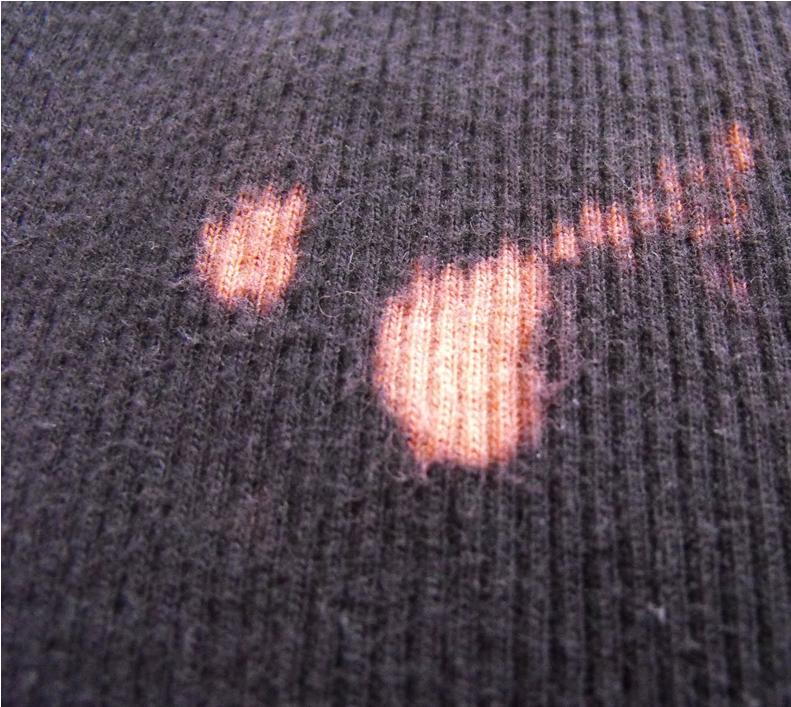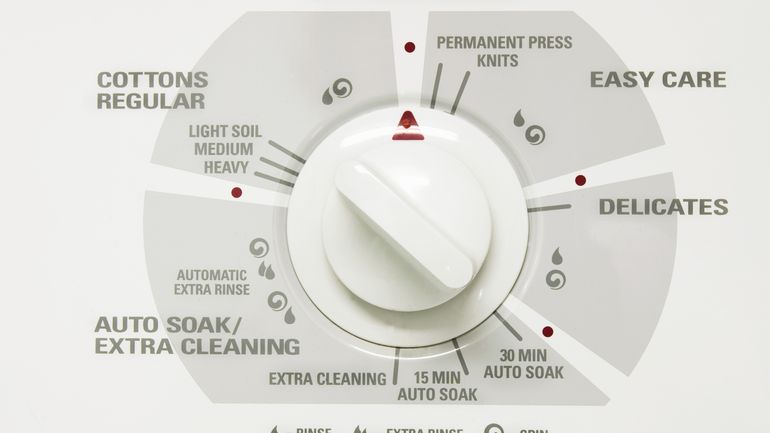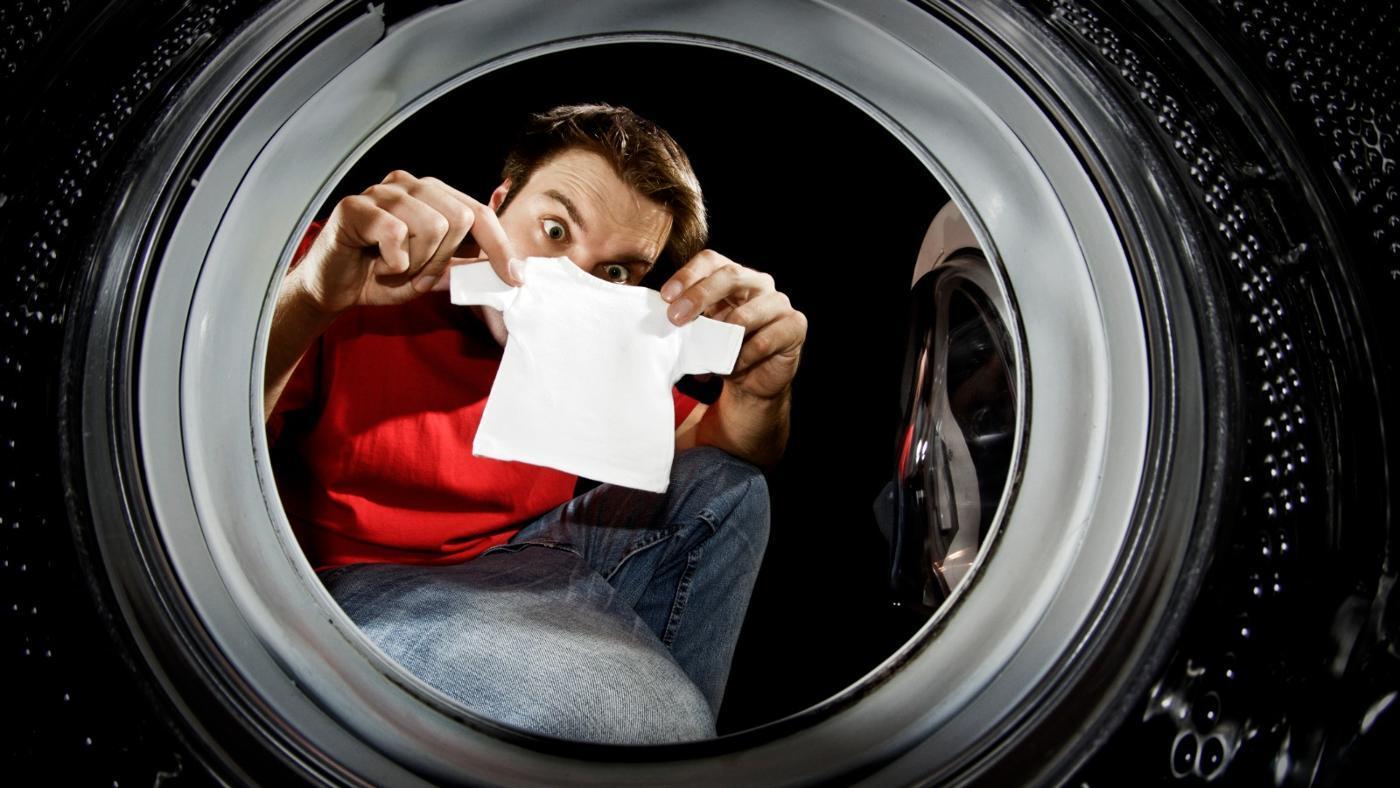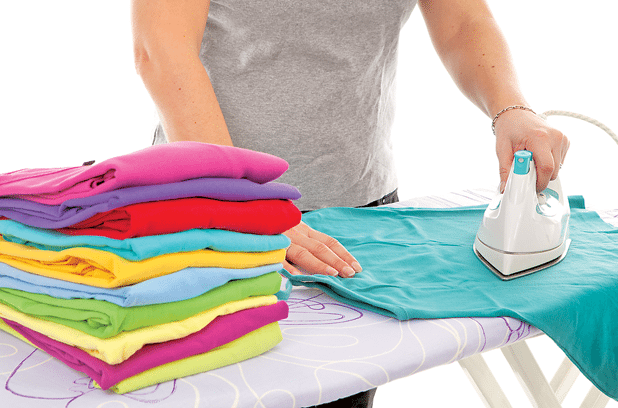You can subscribe to one of two schools with your t-shirts.
In one school, fate decides at wash time. Those sorts of people shove new and old shirts in the washing machine together. It’s a Darwinistic approach, one I can’t recommend.
Many a good shirt has lived a short life at the hands of careless abandon. In the other school, t-shirt fanatics treat each shirt with individual care, washing them only by hand with the best cleaning materials money can buy.
This is also a silly plan, not necessarily better. Hand washing can lead to warped shirts. Nobody likes that.
There are a few variables to consider when caring for your cherished t-shirt. Not all T-shirts were created equally. Many of the time-honored rules stretch across fabrics like, well… t-shirt material.
To Bleach Or Not To Bleach
In general, you won’t bleach your t-shirts. Even if you use a color-safe bleach, there are elements in the bleach which can destroy the fibers.
The only exception to this rule is if you are washing white t-shirts you wear for utilitarian purposes in a setting that mandates the purest of whites, like for your job. In that case, you’re buying t-shirts like you buy paper towels. You accept that there is a lifespan, then you replace them.
Even those cases, pour the bleach in the wash water before adding your shirts. You want it to mix around well beforehand. That way the bleaching is even. It’s less concentrated on your shirt, so you won’t expose yourself to chemicals after you’ve done the wash.
Be advised that when working with bleach, it has a way of landing where it’s not supposed to. If you’re wearing your sweet new Metallica t-shirt while bleaching your whites, that may be the end of that Metallica shirt as you know it.
You’re creeping dangerously close to the wild abandon end of the spectrum. Best to wash your clothes shirtless to avoid this. Keep the basket of dirty clothes far from the washing machine.
Rinse off the outside of the bleach bottle and wipe it down immediately after pouring and screwing the cap back on tightly.
Chilling Out
The general rule of washing clothes is that the hotter the water, the more volatile the consequences. It’s an aggressive approach to tough stains, but a tough environment for some colors. Hot water can sometimes cause stains to set in deeper.
Unless you have a specific goal in mind, don’t use hot water. Institutions use hot water to clean bacteria from sheets and such. Think hospitals and hotels.
Ice cold isn’t necessary either. Just select the cold water option on the washer, wash and rinse. The other benefit of washing cold is that washing with like colors is less important.
Hugging the caring side of the spectrum, you’ll want to separate your loads by color. If that’s not an option, mixing is risky, definitely on the wild abandon side of things, but safer in cold water.
The Cycle Of Life
Your washer likely has settings ranging from permanent press to delicate.
Permanent press does not mean your clothes will come out pressed. When you select this option it means your load is on the sturdy end of clothes. For most t-shirts, they’re sturdy enough.
If you have a cotton setting, use that instead, but permanent press will work.
Here is where our spectrum of approaches may diverge. Some pros prefer to wash their precious tees in delicate settings, especially if the fabric is antique or thin. I would lobby that in that case, it may be time wash it by hand.
Hand washing comes with its own risks, so it may be time to retire that t-shirt. As a general rule, most tees can take perm press. More importantly, make sure you don’t stuff your t-shirt in the basin.
For most washers, the rule is no higher than the last set of holes in the top of the basin, loosely placed. Flip your t-shirts inside out to protect the design elements.
Drying Machine Hell
A drying machine is an awful place for cloth. It works for drying, but organics like the cotton shrink in the dryer.
Synthetics don’t shrink unless we’re talking about rayon, but they do grow brittle over time. If you want to preserve the life of your tee, leaning towards to more caring side of the spectrum, you’ll skip the dryer.
Don’t line dry your shirt either. That’s a fast route to weird stretching. Also, don’t use one of those interior drying racks. You’ll get lines in your dried t-shirt.
Instead, lay your t-shirts on a flat surface with good airflow. A clean bed works, but you might lay them on clean dry towels to be sure. The towels will dry. You can put them back in the cupboard afterward.
Assist the airflow by placing a fan aimed indirectly at your drying spot, just above or to the side of your t-shirt(s).
Pressing Issues
Gonna come right out with this one. If you’re a t-shirt fan, you don’t own an iron. That said, since you’re reading a blog aimed at the uninitiated, you may still live with Mom and Dad. But if you don’t, you know better than not to buy a steam iron for your clothes.
Whatever the case, leave that iron out of the equation. Some upstart young adults figure out the operation of said iron and get excited about the fresh pressed look it creates.
A good ironing is a must when you’re talking business clothes. Don’t iron your jeans or t-shirts.
Pull your t-shirt over your head with care. When you’re ready to climb out of it, don’t rip it off either.
The best thing you could do is have someone pull your shirt over your outstretched arms. That notwithstanding, try not to pull the bottom or sides of your shirt out as you pull it off your body. Keep it tight to your skin.
Follow these directions and your shirts will last twice as long on average as they would otherwise.







